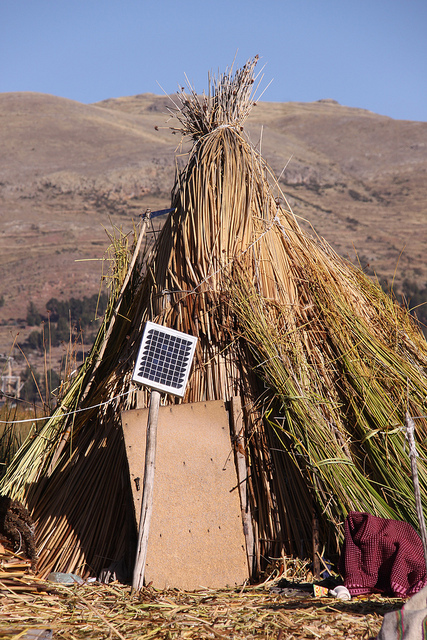California Lags Behind Third World Countries in Solar Initiatives
- Details
- Category: Tungsten & Sapphire Growth Furnace News
- Published on Thursday, 25 July 2013 14:18
We here in the Golden State are proud of our growing solar infrastructure, and rightly so. But two countries not necessarily known for their fabulous wealth -- Peru and Thailand -- have just put solar programs in place than make us look like we're not serious by comparison.
In Peru, according to reports late last week, the Andean nation's government has set out to provide its least affluent two million people with electricity by giving them solar panels. Peru's "National Photovoltaic Household Electrification Program" seeks to bump the percentage of Peruvians with access to electrical power to 95 percent by the end of 2016. Right now, about a third of the people in the country are without power. Peru's strategy is to solarize 500,000 poor households, providing photovoltaic electrical power for around two million people.
If we in California were to embark on a "solar for the poor" program of comparable scale, it would mean equipping 2.53 million Californians with solar power. That's the equivalent of giving everyone in San Diego and San Jose solar panels, with enough left over to completely solarize Irvine, the state's fastest growing city.
According to Peru's Energy and Mining Minister Jorge Merino, the solarizing program is expected to provide direct health benefits to Peru's poorest. "This program is aimed at the poorest people, those who lack access to electric lighting and still use oil lamps, spending their own resources to pay for fuels that harm their health," Merino told the Latin American Herald Tribune.
This isn't the first such initiative in Peru, as witness this 2010 photo of a small solar panel on a totora hut on one of Lake Titicaca's famous floating islands, provided the Native residents as a result of a Presidential campaign promise:

Solar hut on Lake Titicaca | Photo: superfluity/Flickr/Creative Commons License
Meanwhile, Southeast Asia's Kingdom of Thailand has announced it plans to implement a solar feed-in tariff for both rooftop and ground-mounted solar that will pay rooftop panel owners prices for their power that make the Los Angeles Department of Water and Power's much-vaunted feed-in tariff program look really stingy by comparison. Participants in the Thai program who install rooftop solar arrays of less than 10 kilowatts in capacity, a typical size for a small California home, will receive 7 baht for every kilowatt-hour their panels produce. At current exchange rates, that's about $0.26 American. Villages that pool their resources and install a 1-megawatt ground-mounted community array, likely to supply the majority of power needs for many small Thai towns, will get an astonishing 9.75 baht per kilowatt-hour. That's equivalent to 31 and a half American cents these days, nearly twice what LADWP is paying its feed-in tariff participants.
It's one thing to hang our Californian heads in shame compared to a technological powerhouse such as Germany. When Peru and Thailand, neither of which is an especially affluent country, start to surpass us in programs for solar development? It's time to stop goofing off and start getting those solar panels put up.
For more on using solar tech to improve public health in Peru, check out innovativesolarperu.org (By KCET)
Tungsten for Sapphire Growth Furnace Manufacturer & Supplier: Chinatungsten Online - http://www.chinatungsten.com
Tel.: 86 592 5129696; Fax: 86 592 5129797
Email: sales@chinatungsten.com
Tungsten Picture Center: http://picture.chinatungsten.com
Tungsten Video Center: http://v.chinatungsten.com
Tungsten News & Tungsten Prices, 3G Version: http://3g.chinatungsten.com



 sales@chinatungsten.com
sales@chinatungsten.com